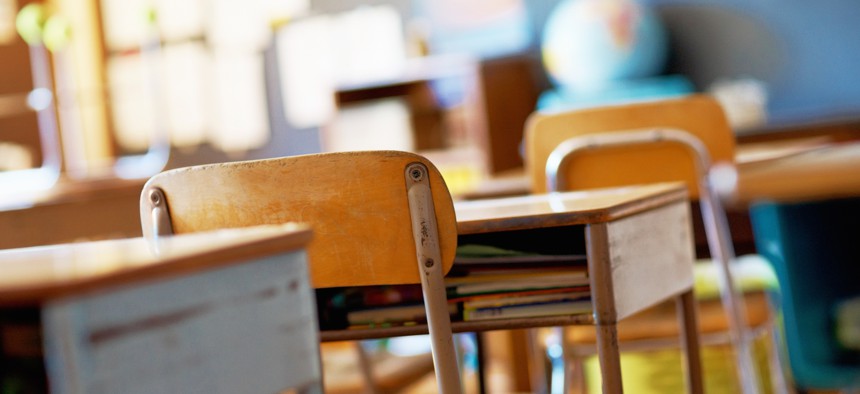How K-12 Spending Has Slipped as a Share of State Economic Output

iStock.com/GlobalStock
A new study concludes that school spending was billions short in recent years compared to where it would have been if spending trends during the early 2000s continued.
Funding for K-12 schools in most states was down in recent years compared to over a decade ago based on one metric that looks at spending as a share of economic output.
That's according to new research from the Albert Shanker Institute and Rutgers University Graduate School of Education. It finds that 37 states devoted a smaller share of their economies to K-12 schools in the 2018-19 timeframe than they did during the years leading up to the Great Recession of 2007-09.
The authors of the report refer to the funding measure they used here as "fiscal effort." This is a comparison of state and local school spending to gross state product (a measure of economic output similar to gross domestic product at the national level).
A decline in funding around a recession isn't that unexpected, the report notes. But it adds: "What’s truly disturbing—and unusual—is the fact that effort never recovered ... U.S. average effort level was lower in 2018 and 2019 than at any point in recent history."
“The reality is that it costs more to achieve higher educational outcomes,” Rutgers professor Bruce Baker, one of the report’s co-authors, said in a statement. “We’re unlikely to see much return on our investments when we’re not really making those investments.”
The researchers modeled how funding would've looked in recent years if the fiscal effort metric recovered to levels seen before the recession.
They conclude that the actual fiscal effort for 2013-19 is about $400 billion short of what it would have been during that time under average 2004-07 funding levels. That dollar amount works out to about 9% of total spending on schools between 2013 and 2019.
Funding Inequities
The report also highlights various inequities with education spending.
For instance, looking at a measure of spending "adequacy" on K-12 schools, the researchers find that, on average, actual spending is 17% below estimated adequate levels in the highest-poverty districts, and that this shortfall is over 30% in 18 states. In contrast, just eight states weren't hitting adequate spending marks in their wealthiest districts.
Meanwhile, Black and Hispanic students were twice as likely than white students to be in underfunded districts, the report says.
It also says that inequality in education funding is increasing between states, with the divide between the 10 highest- and lowest-spending states growing by about 250% between 1998 and 2019. "While there have always been higher- and lower-spending states," the report adds, "the gaps have widened substantially."
The full report can be found here.
Bill Lucia is a senior editor for Route Fifty and is based in Olympia, Washington.
NEXT STORY: Report: Immigrants Could Help Revive the Middle Class






